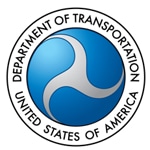
Foxx
WASHINGTON – With federal surface transportation funding set to expire on May 31, thousands of stakeholders will rally together for Infrastructure Week to urge Congress to say “no” to more short-term measures and “yes” to a long-term funding solution. In support of the third annual Infrastructure Week, U.S. Transportation Secretary Anthony Foxx is participating today in kick-off events in Washington and will then head out to meet with state and local leaders, business leaders, and academics in Tennessee, California, and Iowa.
“Our nation’s economy and the way we live both depend on having strong infrastructure,” Secretary Foxx said. “But the truth is that our current levels of investment are falling short of what is needed just to keep our existing system safe and in good condition. To make matters worse, over the past six years, Congress has passed 32 short-term measures that have stripped away the ability of state and local governments to complete big projects.”
Today, Secretary Foxx also sent letters to State Transportation leaders to notify them that all federal participation in highway transportation infrastructure construction will stop after May 31 if the current federal funding authorization is allowed to expire. Without authority to continue funding agency operations, States will not be reimbursed for construction costs or receive technical support and will have to shoulder the burden themselves. Click here to see a copy of the letters.
Throughout the week, Secretary Foxx will highlight an alternative to that funding shortage, which is the Obama Administration’s GROW AMERICA Act, a surface transportation bill that would provide six years of funding certainty and grow overall investment by 45 percent. The $478 billion proposal would increase funding in our roads, highways and transit systems, and for the first time would provide dedicated funding for passenger rail, rail safety, and a national freight program.
Secretary Foxx’s trip will begin in Tennessee, a state that has a $6 billion backlog in highway projects, according to the Tennessee Department of Transportation. He will visit two projects that would improve safety for drivers and reduce traffic congestion, but both are delayed due to inadequate federal funding. On Tuesday, May 12, in Knoxville, Secretary Foxx will meet with Mayor Madeline Rogero and the Knoxville Regional Transportation Planning Organization to discuss the proposed Alcoa Highway project. Later in the morning, the Secretary will hold a media availability with Knoxville Mayor Rogero, Knox County Mayor Tim Burchett, and, Sacramento Mayor Kevin Johnson at the Knoxville Convention Center. He will then travel to Memphis where he will be joined by Mayor AC Wharton, and the Memphis Urban Planning Organization to discuss the Lamar Avenue project.
On Wednesday, May 13, Secretary Foxx will visit Delphi Labs in California’s Silicon Valley to announce new connected automation safety initiatives. This visit will build on the national conversation he launched earlier this year with the release of Beyond Traffic, a report that examines how new technologies and public policy will shape U.S. transportation systems to enable new safety, mobility, growth, and economic benefits for our future.
The next day he will travel to Los Angeles to join Mayor Garcetti at the construction site of the soon-to-be-finished Division 13 Bus Maintenance and Operations Facility. The project was funded by the Federal Transit Administration and demonstrates the potential of increased transit investment to create jobs and greener infrastructure.
Secretary Foxx’s Infrastructure Week tour will conclude Friday, May 15, in Des Moines, Iowa, with a visit to the Southeast Connector Project, which is a crucial element in a series of infrastructure enhancements that will revitalize industrial areas, create jobs, and improve road safety.
“When you have had 32-short term measures in six years, any funding bill put forward that is actually big enough to meet the country’s challenges will be labeled by some as unrealistic,” Secretary Foxx said. “But I also think it is unrealistic to think that if we continue underinvesting in infrastructure that we will be able to meet the needs of 70 million more people in 30 years. We are in a big ditch, and we have to take some bold steps forward and solve it with a big solution.”
Infrastructure Week has nearly 80 affiliate organizations in business, labor, and advocacy, including the National Association of Manufacturers, American Society of Civil Engineers, AFL-CIO, Brookings Institution, the U.S. Chamber of Commerce, and Building America’s Future. More than 40 events will be held to highlight the need and benefits of modernizing America’s infrastructure.
 SOMERVILLE, Mass. – U.S. Transportation Secretary Anthony Foxx announced a $996 million federal grant agreement to extend Massachusetts Bay Transportation Authority (MBTA) Green Line light rail service from East Cambridge to Somerville and Medford. The extension will provide faster and more efficient travel to jobs in downtown Boston and will serve some of the region’s most densely populated communities. Secretary Foxx and Acting Federal Transit Administrator Therese McMillan participated in a ceremony to commit the funds with Governor Deval Patrick, Senator Elizabeth Warren, Congressman Michael Capuano, representatives from the Massachusetts Department of Transportation (MassDOT) and MBTA, and other officials.
SOMERVILLE, Mass. – U.S. Transportation Secretary Anthony Foxx announced a $996 million federal grant agreement to extend Massachusetts Bay Transportation Authority (MBTA) Green Line light rail service from East Cambridge to Somerville and Medford. The extension will provide faster and more efficient travel to jobs in downtown Boston and will serve some of the region’s most densely populated communities. Secretary Foxx and Acting Federal Transit Administrator Therese McMillan participated in a ceremony to commit the funds with Governor Deval Patrick, Senator Elizabeth Warren, Congressman Michael Capuano, representatives from the Massachusetts Department of Transportation (MassDOT) and MBTA, and other officials.